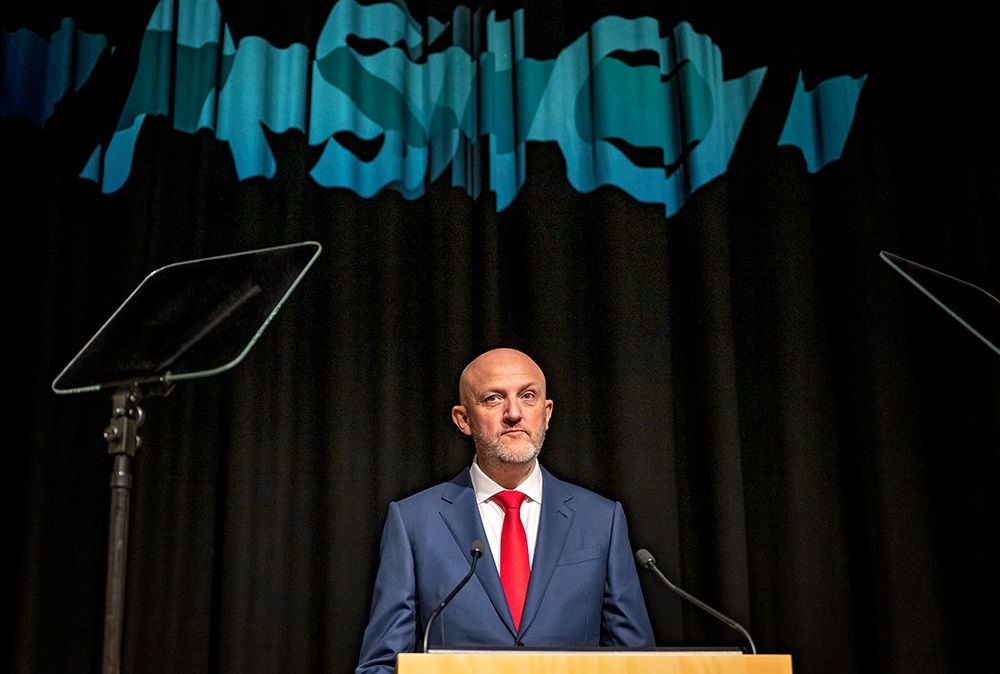
by Sophia Brook
Defining Australia’s Security Landscape – The Director-General’s Annual Threat Assessment 2023
#3/23
09 March 2023
On 21 February, Head of Australian Security Intelligence Organisation (ASIO) Mike Burgess delivered the Director-General’s Annual Threat Assessment in Canberra. The address is driven by what Burgess calls ‘the triple T’s of Threat, Trust and Team’, aimed at improving awareness, enhancing trust through transparency and recruiting new members.
Burgess started his address by stating that Australia is facing ‘an unprecedented challenge from espionage and foreign interference’ that Australians probably do not fully appreciate but that they need to be aware of as it is damaging the nation’s ‘security, democracy, sovereignty, economy and social fabric’. He characterised Australia’s security environment as ‘complex, challenging and changing’, because threats are increasingly intersecting, blurring traditional lines and shaped by shifting geopolitics and emerging technologies, with Australians being targeted by ‘sophisticated foreign adversaries that are effectively unconstrained by resources, ethics and laws’.
Nevertheless, he reiterated his decision to lower the national domestic threat level from ‘probable’ to ‘possible’. Not because Australia is no longer a target, but because there are ‘fewer extremists with the intention to conduct an attack onshore than there were’ when the level was raised in 2014.
He continued with an assessment of the onshore threat landscape, listing a growing reach of extremist content online (resulting in the acceleration of radicalisation processes) and an increase in the radicalisation of minors as some of the new challenges adding complexity to the security environment.
At the same time, incidents like the one in Wieambilla (QLD), which caused the deaths of two police officers and one civilian, have drawn attention to the risk of other forms of extremism, while highlighting the need for more differentiated reporting. With ‘self-proclaimed experts’ disregardingthe distinction between extreme views and violent extremism, it is ‘critical to understand’, so Burgess, ‘that every ideologically motivated extremist is not automatically a left-wing or right-wing extremist. There is a cohort of individuals motivated by a toxic cocktail of conspiracies, grievances and anti-authority beliefs. It is neither helpful nor accurate to reflexively assign these individuals to a place on the political spectrum.’
Despite these forms of extremism, according to Burgess, currently by far the biggest threats to Australia, and the most important one to him personally, are espionage and foreign interference, with ‘some of the governments doing these things [being] considered friends’.
Some perpetrators are using foreign interference and espionage to undermine Australia’s national interests, identifying vulnerabilities that can be exploited to advance their own agendas. In view of this, it is becoming ever more important for the Australian public, not just officials, to become aware of the various types of interference and learn to recognise when they are being targeted. One of the major points Burgess emphasised during his speech in this regard was that people should never assume that the knowledge they have is irrelevant to foreign entities looking for useful information.
An interesting revelation during this part of the speech was the fact that ‘individuals in business, academia and the bureaucracy have told [Burgess] ASIO should ease up its operational responses to avoid upsetting foreign regimes’. Without naming particulars, it is hard to determine what this refers to, however, it has been interpreted by some media outlets and members of the Opposition as proof that ASIO might have been told to ‘ease up on China’ to avoid deteriorating the brittle relationship even further.
One of the questions arising from Burgess’ address is the question of why Australia is not simply using the counter-espionage laws introduced under the Coalition government in 2018. These laws feature a ‘complex scheme’ of 27 punishable espionage offences and an additional nine new crimes of foreign interference. However, neither of the new laws has been used very often to date. This is mainly attributed to the fact that, although the laws are sufficient to target individuals engaging in espionage, it is much harder to actually prosecute spies due to difficulties relating to the collection of evidence, extradition and the possible disclosure of restricted information in legal processes. Nevertheless, these difficulties do not entirely explain why suspected espionage cases are not pursued more.
So what does this mean? It means that Australia’s threat environment is changing, with more traditional threats being replaced by more covert ones. Like its international, (geo)political security environment, the country’s threat landscape is also becoming more complex. As a result, additional measures need to be taken to counter new extremist threats and become more resilient to more covert tactics of foreign interference. Unlike in the past, security is no longer just dependent on state and law enforcement institutions, but increasingly requires the public to become more aware and security conscious. As Burgess stated in his conclusion: ‘Security is a shared responsibility.’






